The M.Zuiko 45mm f/1.8 is a lens we’ve owned since we first bought our introductory Micro Four Thirds camera, the Olympus OM-D E-M5. The equivalent of 90mm on a Full Frame camera, it is natively a portrait lens and works wonderfully to that end with its beautiful bokeh and a maximum fast aperture of f/1.8.
But what happens when you push the boundaries of a lens with such a clear-cut task as the 45mm? Great things, I believe! Sometimes it can be a wonderful creative exercise to use a lens for a genre of photography for which it isn’t intended.
The other day, I decided to do just this. With the 45mm attached to my Olympus Pen E-P5, I set out to do some landscape photography around the spectacular Dynsynni River behind the seaside town of Tywyn in Wales.
It goes without saying that using a portrait lens as a landscape lens presents its challenges.
First of all, anything in front of or behind the object in focus will appear blurry if you use a fast aperture. With a wide-angle lens such as the 12mm, noticeable blurring won’t occur even at f/2.0 unless you place your subject directly in the foreground, close to the lens. A shallow depth of field is generally undesirable in traditional landscape photography because the goal is to capture the entirety of a large-scale scene, not to isolate specific details or subjects.
During my walk, my aim was to break this golden rule of landscape photography by throwing the foreground and background slightly out of focus, placing more attention on the subject in the middle ground. I found the effect most pleasing, as it creates something akin to a miniature portrait within a wider landscape. The example below demonstrates the effect.
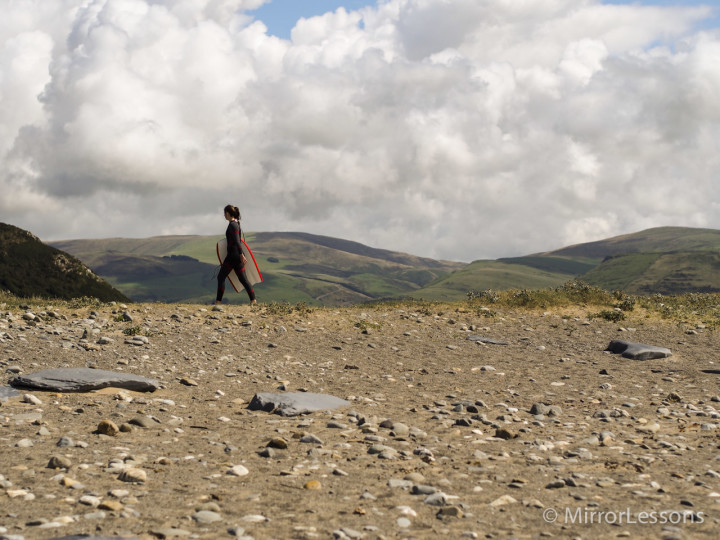
E-P5, 1/5000, f/ 2.5, ISO 100
A second issue that comes with using the 45mm as a landscape lens is that your field of view is very limited. While a wide-angle lens like the 12mm would allow you to capture an entire chain of mountains, the 45mm would hardly squeeze one or two into the frame.
Using a lens like the 45mm for landscapes forces you to think very carefully about your composition. You ask yourself questions like: What should I be focusing on? What can I fit into my frame? What should I exclude? With a wide angle lens, you start by searching for the best composition and the best light you can get. After that, the scenery does the rest.
In the case of the 45mm, I’ve found that it helps to focus on specific details, symmetry, lines and shadows since the scenery alone will not do the work for you.
Since you know you cannot capture everything in the frame, pick one or two details to generate an interesting composition. In the case of the photo below, I chose to focus on the boat and bridge despite there being many other objects to include (sheep, stones, grass) around the scene. The result is simple, clean and pleasing to the eye.
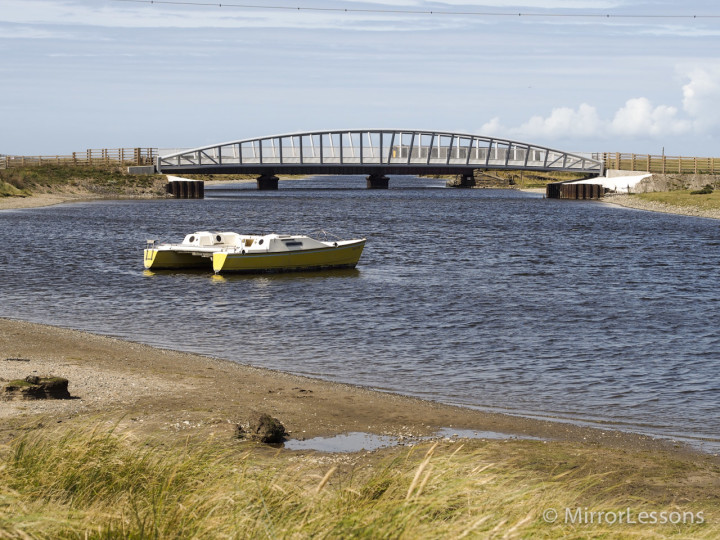
Symmetrical images also come out well with the 45mm. This is not to say that wide-angle symmetry isn’t attractive, but it plays a different trick on your perspective. A wide-angle lens will make a symmetrical bridge, for example, look larger and more impressive than it actually is, whereas the 45mm visually pulls you in towards the bridge, giving a sensation of movement. This is demonstrated with the newly-built Bay Bridge and the train tracks below.
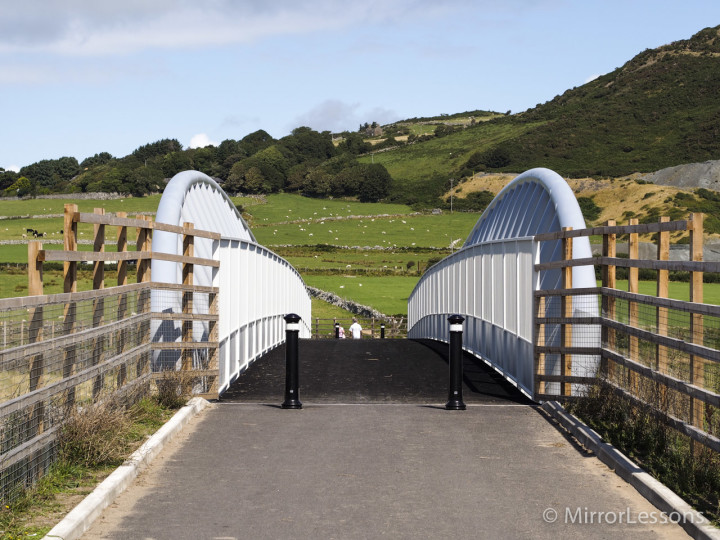
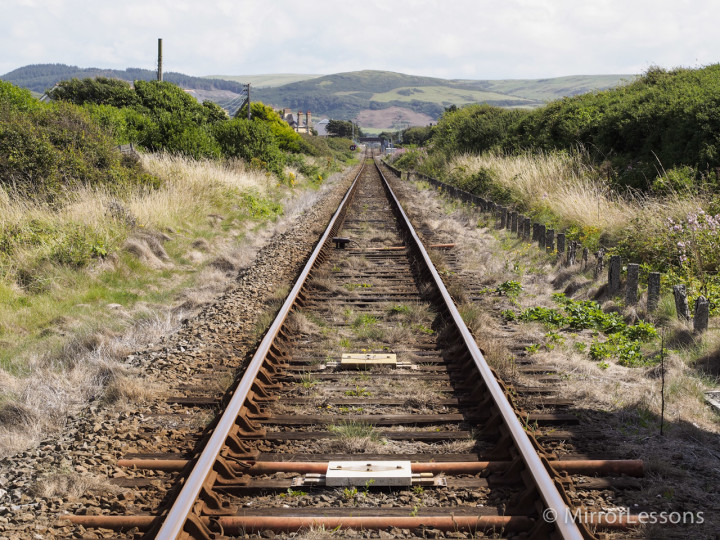
Many of the photos I ended up taking on my walk with the 45mm also included lines. This wasn’t intentional but the natural result of the limitations the lens places on your field of view. Using interesting lines to my advantage, I was able to take a number of abstract images that presented a perspective of the area that would not have been possible with a wide-angle lens.
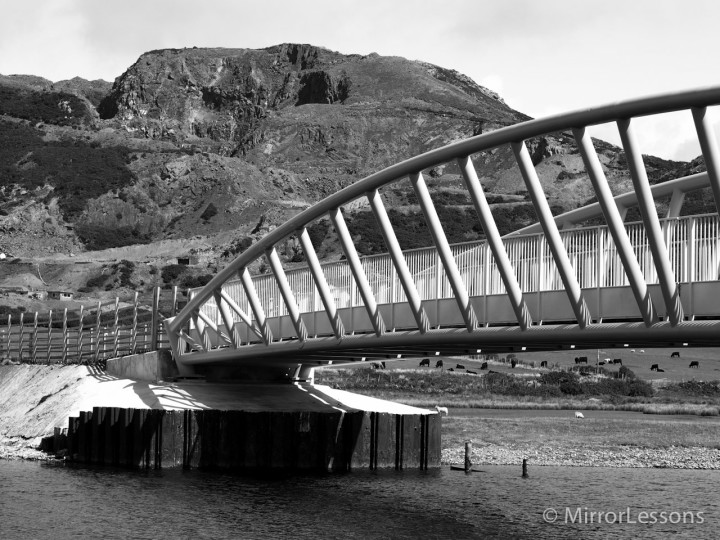
Likewise, shadows can also inspire interesting compositions with the 45mm. In the photo below, the dark underside of the bridge and the shadows it cast juxtaposed against the bright river bank made for the perfect composition. Mathieu even made a timely appearance in the photo–what could be better than that? 😉
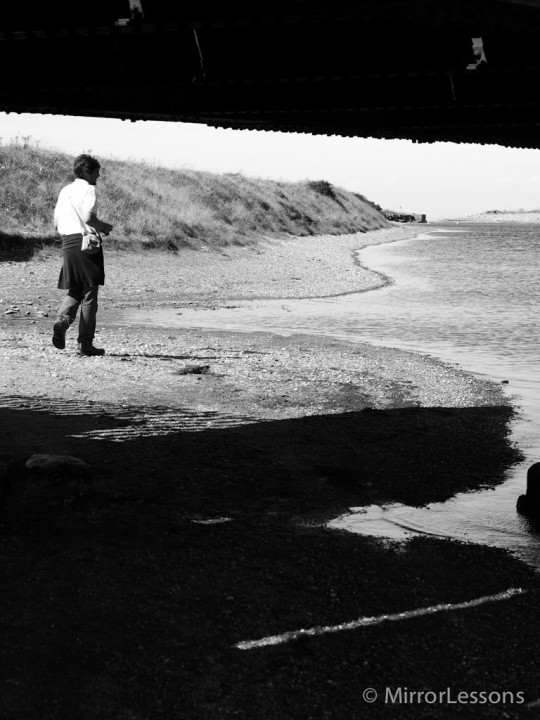
Photographing with the “wrong” focal length can be both a challenging and exciting exercise in the creation of images. It can help you see the world, and most importantly the place you shoot most frequently such as your hometown, in an entirely different light. So, go on, give it a try–you really have nothing to lose!
Update: Below you’ll find a small gallery of landscape photos I took with the 45mm in the days following the Dysynni walk.
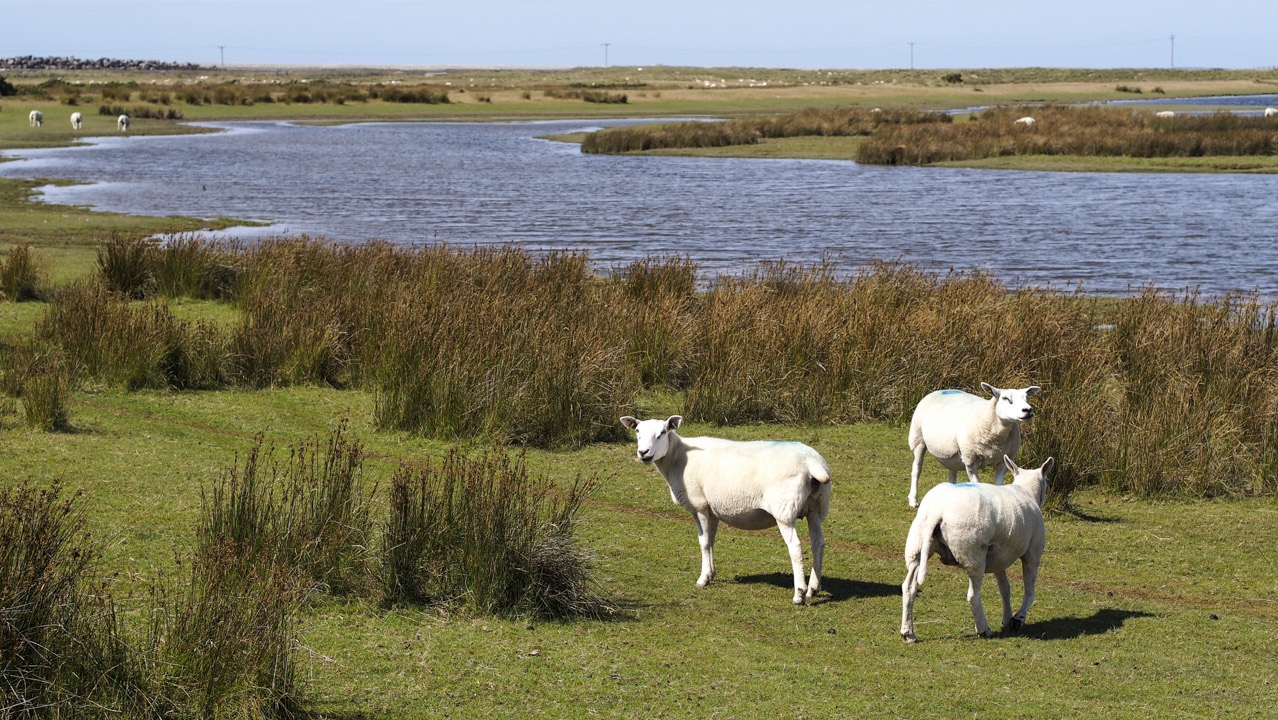
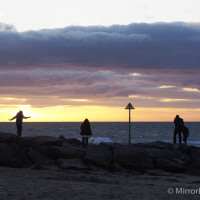
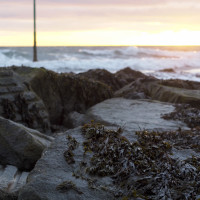
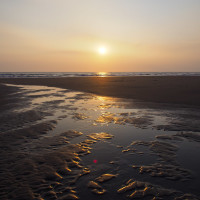
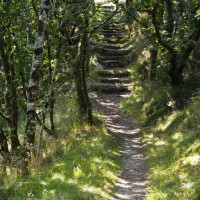
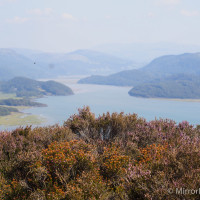

Yes, I actually meant to write shallow depth of field. Thanks for pointing that out.
What you say is true; landscape shots must be carefully planned out, as with any other photograph really.
You probably mean that shallow depth of field here, not bokeh, as the latter term is used to describe the aesthetic quality of the out of focus areas in the frame.
Some might argue that the opposite is true and wider angle lenses require more consideration for what to include, and more importantly, omit from your composition. Wide angle shots generally require careful selection of foreground interest and an indication of scale to be effective.
If they are not portrait lenses, then what are they, considering that they meet the general criteria of a portrait lens and are specifically marketed as such by Olympus?
45 and 75 are not portrait lens. Never, ever. Nice review and use them more for Landscapes scenes.
What a wonderful gift to receive! 🙂 You are very welcome to share your photos and videos. I think the best place would be on our Facebook page. I took forward to seeing your work!
Hi Heather,
Nice review on the 45mm 1.8-I was given this lens by my friend a Olympus dealer last year when I purchased the Gh2 in 2012 I have used it for almost more than a year.
Its an amazing lens even indoors and outdoor at both 50p and 60p-video I use it with the 100mbps Flow Motion hack and the stills are a wonderful combination of tack-sharp and dreamy effect pictures, I will post some photos can I post video’s too?